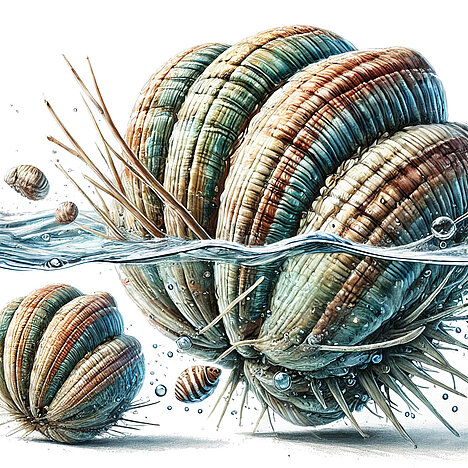Barnacles

In the infinite diversity of nature, there are phenomena that at first glance seem to have little to do with each other. One of these is the connection between barnacles, those small, often inconspicuous sea creatures, and our faithful companions, the dogs. This article dives deep into the world of barnacles, shedding light on their peculiarities and exploring what effects they might have on dogs. Prepare to immerse yourself in a story of curiosity, science and the surprising connection between the marine and animal worlds.
What are barnacles?
Barnacles are crustaceans that belong to the group of barnacles (Cirripedia). They live attached to rocks, ship hulls, mussel shells and even whales. Their external appearance is reminiscent of small volcanic cones surrounded by a hard calcareous shell. Inside this shell, barnacles lead a sedentary life, filtering plankton and other nutrients from the water with their feathery legs.
A connection to dogs? Really?
At first glance, the connection between barnacles and dogs may seem far-fetched. But in the world of biology and ecology, interactions are often more complex than they first appear. The relationship between these two very different creatures is not based on direct interaction, but on the impact barnacles have on marine ecosystems and how these ecosystems can ultimately affect the welfare of dogs.
Benefits of barnacles: A boon for marine ecosystems
Natural water filters
Barnacles play an important role in the marine ecosystem as natural water filters. By filtering plankton, they help purify the water, which can indirectly affect the health of dogs, especially those that live near the coast and feed on seafood or frequently walk on beaches with their humans.
Biodiversity and ecosystem health
The presence of barnacles on rocks and in intertidal areas helps to increase biodiversity by providing habitat and food sources for other marine life. Rich biodiversity in marine ecosystems provides a healthy and stable environment that ultimately improves the quality of life for dogs and their people.
Disadvantages: Possible risks and considerations
Accumulation of pollutants
Although barnacles help to clean the water, they can also accumulate pollutants that enter the sea as a result of human activities. These pollutants could theoretically enter the food chain, posing a potential risk to dogs that consume seafood.
Misinterpretations and misunderstandings
Another potential disadvantage is not directly caused by the barnacles themselves, but results from a lack of knowledge and understanding. Misinterpretations of the role of barnacles in the ecosystem could lead to unnecessary fears or inappropriate reactions from dog owners, especially when it comes to the health of their pets.
A balance between wonder and vigilance
The world of barnacles and their indirect connection to our four-legged friends is a fascinating example of the complexity and interconnectedness of nature. While barnacles offer many benefits to marine ecosystems, it is important to strike a balance between admiration for these small sea creatures and vigilance against potential risks. For dog owners and nature lovers alike, exploring such topics provides a valuable opportunity to raise awareness of the beauty and fragility of our world and strengthen bonds with our faithful companions in the context of a greater ecological understanding.
If you notice any signs of hypersensitivity or poisoning in your dog, you should see your vet immediately. We are not a substitute for a vet, but we try to be as accurate as possible. Every dog reacts differently and we recommend you get a second opinion or consult your vet if in doubt.
Stay healthy and take good care of your four-legged friend!😊